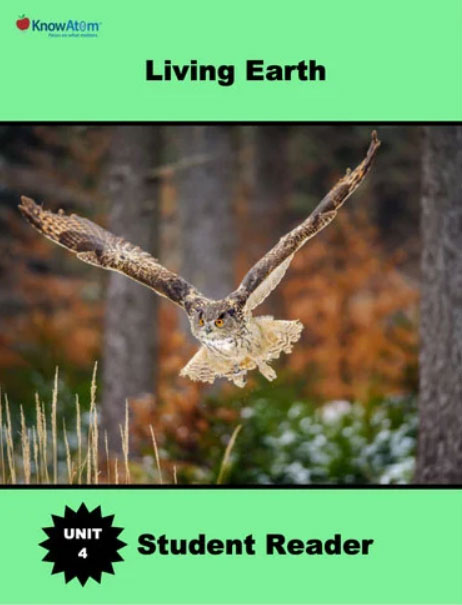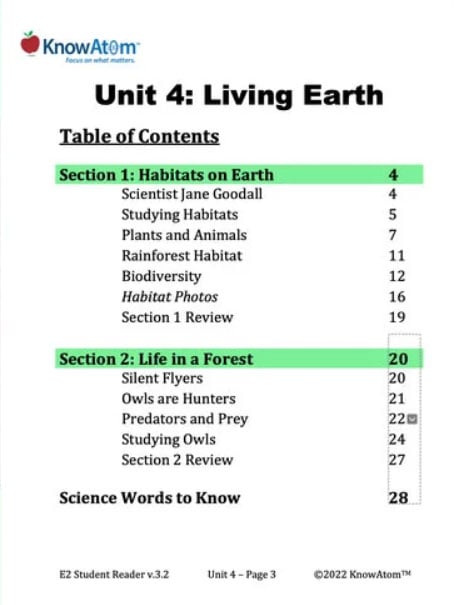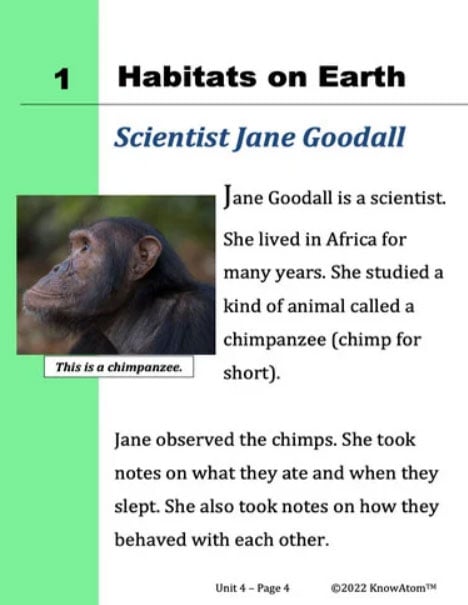Students connect their exploration of Earth’s land and water with a study of living things in this lesson. They begin by modeling different habitats on Earth to compare the living and nonliving parts of each habitat.
In the last unit, students explored patterns in land and water on Earth. They build on that knowledge in this unit with a focus on how living things are found in different habitats around the planet, and how living things depend on both living and nonliving components of their environment for survival. This page is a high-level extract from the first lesson in which students are introduced to biodiversity on Earth by modeling three different habitats and comparing the diversity of life among these habitats.
This science information provides teachers with more in-depth background information on the science phenomena being studied in this unit - habitats.
The rainforests in Tanzania that are home to the chimpanzees studied by Jane Goodall are one kind of habitat. A habitat is a place where life grows. It provides living things, including plants and animals, with water, air, food, and shelter.
Rainforests are particularly rich in biodiversity, which refers to the variety of living things in the world or in a particular habitat. For example, Gombe National Park, where Goodall did her research, is home to a diverse set of plants, including grasslands, alpine bamboo, and the lush vegetation of a tropical rainforest. All plants are living things that make food from sunlight through the process of photosynthesis. They also “breathe” by exchanging gasses with the environment, taking in carbon dioxide and releasing oxygen. Finally, they grow and reproduce. Gombe is also home to a diverse range of animals in addition to chimpanzees, including baboons and multiple species of monkeys. There are also more than 200 bird species, 11 species of snakes, and an occasional hippopotamus or leopard. An animal is a living thing that needs to eat other living things for energy, breathes in oxygen, and undergoes growth and reproduction.
Both plants and animals are living things because they breathe, need energy, food and water, grow, move, and reproduce. The water, air, and sunlight are nonliving components of all habitats. Nonliving things are things that don’t meet all of the needs for life, and have never met those needs. All living things depend on other living things, as well as their environment, for survival.
Students connect their exploration of Earth’s land and water with a study of living things in this lesson. They begin by modeling different habitats on Earth to compare the living and nonliving parts of each habitat.

Prepared hands-on materials, full year grade-specific curriculum, and personalized live professional development designed to support mastery of current state science standards.
Animal: a living thing that needs to eat other living things for energy, breathes in oxygen, and undergoes growth and reproduction
Biodiversity: the different kinds of living things in the world or in a particular habitat
Habitat: a place where life grows; provides plants and animals with clean water, air, food, and shelter
Living : anything that breathes, needs energy, food and water, grows, moves, and reproduces
Nonliving: anything that does not meet, and has never met, all of the requirements of life
Plant: a living thing that makes food from sunlight
Predator: a living thing that eats other living things
Prey: a living thing that gets eaten by another living thing
Scientist Jane Goodall
Jane Goodall is a scientist. She lived in Africa for many years. She studied a kind of animal called a chimpanzee (chimp for short). Jane observed the chimps. She took notes on what they ate and when they slept. She also took notes on how they behaved with each other.
Studying Habitats
Jane studied the chimps in their natural habitat. A habitat is a place where life grows. It provides plants and animals with water, air, food, and shelter. There are many different kinds of habitats on Earth. Forests, lakes, oceans, deserts, gardens, and rivers are all habitats.
Each habitat has different kinds of living and nonliving things in it. A living thing breathes, grows, and moves. It reproduces. It needs energy, food and water. Food is important because it helps living things grow. As they grow, living things get bigger and more complex. Food gives living things energy. This energy allows living things to move. Some living things move in ways we can’t see. It happens in their bodies. Animals can also move from place to place.



For the hands-on activity of this lesson, students work in teams to create models of three different habitats: an ocean habitat, a lake habitat, and a forest habitat. They organize the living things within each habitat, and use their model to identify patterns in biodiversity. Students construct an explanation based on their observational data about the different types of living things in each habitat, describing how these types of living things compare to living things in other habitats.
KnowAtom incorporates formative and summative assessments designed to make students thinking visible for deeper student-centered learning.

Standards citation: NGSS Lead States. 2013. Next Generation Science Standards: For States, By States. Washington, DC: The National Academies Press. Neither WestEd nor the lead states and partners that developed the Next Generation Science Standards were involved in the production of this product, and do not endorse it.
